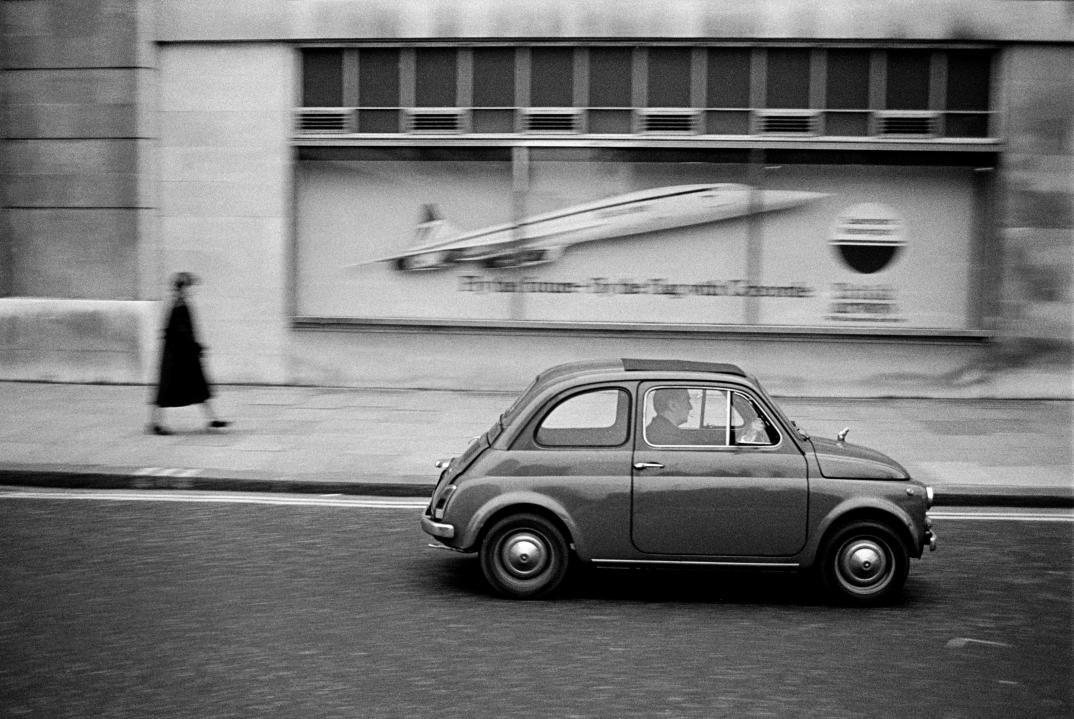What Phones Are Doing to Reading
It’s becoming harder, or at least less common, to read the old-fashioned way. But the new ways of reading are not all bad.
For the past five years or so, I’ve read books on my phone. The practice started innocently enough. I write book reviews from time to time, and so publishers sometimes send me upcoming titles that fall roughly within my interests. When a publisher provided a choice between a PDF of a book and a physical copy, I would usually ask for the PDF, because I didn’t want my house to fill up with books that I might end up not reading. But what was at first a matter of clutter-free convenience became a habit, and now I encounter nearly every written work, regardless of its length, quality, and difficulty, on the small screen of my iPhone.
I use a variety of e-reading apps: Amazon Kindle, Apple Books, Libby. The last three books I downloaded onto the Apple Books app are Rachel Cusk’s novel “Second Place”; Malcolm Lowry’s 1947 classic “Under the Volcano,” which I bought because I wanted to see if I would enjoy it more than I did when read it twenty years ago; and Gary Indiana’s essay collection “Fire Season.” According to the little readout beneath the cover image for each book, I am nine per cent through the Cusk, a distressing three per cent through the Lowry reread, and a hundred per cent through the Indiana, a book I found liberating, both for its style and for its freeing expression of unpleasant thoughts.
The e-reading apps have their merits. At times, they become respites from the other, more addictive apps on my phone. Switching to a book from, say, Twitter, is like the phone-scroller’s version of a nice hike—the senses reorient themselves, and you feel more alert and vigorous, because you’ve spent six to eight minutes going from seven to eleven per cent of Arthur Koestler’s “Darkness at Noon.” Or you might feel a sense of pride because you’ve reached the sixty-per-cent mark in Elton John’s autobiography, “Me,” which isn’t a great work of literature but at least is better than Twitter. The book apps also seem to work as a stopgap for children, who are always lusting after screen time of any sort. My seven-year-old daughter has read hundreds of books on the Libby app, which lets you check out e-books from public libraries you belong to. As a parent, I find this wildly preferable to hearing the din of yet another stupid YouTube short or “Is it Cake?” episode coming through her iPad’s speakers.
Still, the arrival of these technologies has been accompanied by a steady decline in the number of books that get read in any form. A pair of 1999 Gallup polls, for example, found that Americans, on average, had read 18.5 books in the course of the previous twelve months. (It should be noted that these were books people had read, or said they had read, “either all or part of the way through.”) By 2021, the number had fallen to 12.6. In 2023, a National Endowment for the Arts survey found that the share of American adults who read novels or short stories had declined from 45.2 per cent in 2012 to 37.6 per cent in 2022, a record low. There are plenty of theories about why this is happening, involving broad finger-pointing toward the Internet or the ongoing influence of television, or even shifting labor conditions, as more women have entered the workforce.
We continue to spend a lot of time reading words, whether via social media or push notifications or text messages, but it can seem off to label any of that “reading,” a term that suggests something edifying or educational. Even book apps, I find, can feel like a sort of in-between, not the time suck of social media but also not the comfortable absorption of a good paperback. There’s something about scrolling and tapping that leads to a quick calcification of muscle memory. You start to tap on the same things not out of familiarity or comfort but out of sheer habit. Now that I read on my phone, I give up on new books more quickly than I used to. I go back to the same stuff over and over, in the same way that I watch the same YouTube videos over and over. I’m not entirely sure why I get mired in such a rut; part of it, I suspect, is just that I’m getting older. Of the books I’ve recently downloaded, only the Cusk came to me via recommendation algorithm, the “For You” box in Apple Books. Even so, I find that my reading habits follow a pattern that one might call algorithmic, and which I prefer to call laziness.
My colleague Kyle Chayka has written shrewdly and at length about the seduction of algorithms and the homogenizing effect they have on cultural production. But I have found myself wondering whether we actually live in a world forcibly shaped by algorithms or whether our phones themselves—their fiddly buttons, their flashing screens, their slight but satisfying heft—have other, more fundamental ways of making us lazy. If the algorithms are to blame, then we need to find ways to get outside of or otherwise away from them. But if the problem is our phones—and, of course, us—then we may have to walk away from much more.
The BOOX Palma is a new e-reader that promises an immersive experience for “reading an ebook, listening to a podcast, or perusing your favorite news feeds.” It costs about two hundred and eighty dollars and is roughly the size of a Google Pixel phone. The Palma runs on the Android platform, which means that you can add apps like Twitter to the device, but doing so is clearly not the point. The screen is matte, gray scale, and plain. Like the Kindle and other e-readers, the Palma is supposed to approximate the look of the physical page and cut down on eye fatigue.
Several years ago, there was some talk that cell-phone addiction was driven, in part, by the bright colors on our phone. Turning your phone display to gray scale would, it was suggested, make things feel less immersive and a bit drearier; this, in turn, would help you cut down on your screen time. Of course, even if this trick works, you can always change your phone back whenever you want. The Palma, though, does not have color options, nor does it have cellular service, and that means you cannot connect to the Internet without Wi-Fi. You can take the device on long, contemplative walks, listening to music or podcasts that you’ve downloaded, knowing that you will not be disturbed by a push notification while you stroll through the woods.
I have bought a handful of similar devices through the years, in the vain hope that one of them might replace my iPhone. The dream is a handheld object that renders the worst and most addictive apps unusable and perhaps even makes the good apps—which is to say, word-processing and e-reading apps—a little better. There’s always a honeymoon period with these devices, during which I envision a whole new life of information consumption. When I bought a Kindle, a few years ago, I subscribed to the Financial Times’s Kindle delivery service; I pictured myself sitting at the table in our kitchen with a bowl of oatmeal, a pot of coffee, and the gray-scale version of the F.T., which might not be as nice as the print version, with its salmon pages, but is certainly better than reading the newspaper’s iPhone app, with a notification buzzing every few minutes. That particular fantasy didn’t last a week.
A methadone-like treatment for cell-phone addiction—that is, a tamer and less addictive version of the real thing—doesn’t seem to work. Though the BOOX Palma can make the apps gray and accessible only through Wi-Fi, I will probably just spend more of my time in Wi-Fi range, watching black-and-white videos. This doesn’t mean that the Palma or other e-readers are useless. The Palma has speakers and Bluetooth compatibility, so it can work with audiobooks to create something of a patchwork of portable text: words issue from the car speakers on my drive to my younger child’s day care, pop up on the device’s screen when I’m waiting in line for coffee, and finally appear on the desktop monitor in my office, where they will get swallowed up by five separate chat platforms and the demands of my fantasy-basketball team.
This bouncing around might be clumsy and a bit tacky, but it tweaks the relationship I have with the prose on the page—and not, to my surprise, in a bad way. As a writer, I often read to remind myself that sentences can, in fact, be interesting. This multimedia method of reading creates quick little shots of prose that can loosen the writing gears. You can read a few pages of Bruce Chatwin, listen to the next chapter in your car, then bounce back to your Google Docs app to spill a bit of short-term inspiration onto your own page. Writers are not entirely different from the large language models that are supposed to replace us: we take in words with our eyes, sort them in our heads, then spit them back out in a sequence that mimics a voice. E-readers can provide a point of stylistic differentiation. Maybe the L.L.M.s will learn to mimic Nabokov better than I can, but I doubt that they will ever sense the difference between “Pale Fire” when it’s read out loud and “Pale Fire” on the page, nor can they feel out the subtle demands this new form of reading would place upon us writers who, I imagine, will soon have to adjust our prose, even subconsciously, to move from screen to speaker to second screen. Those of us who care about human interventions into style, regardless of how subtle and ultimately insignificant they may be, can perhaps take some solace, then, in the possibility that the future of reading will be across mediums, devices, and senses. If we are truly being colonized by the algorithms and A.I., we at least have more places to hide.
One of the books that I find myself tapping on repeatedly—without ever getting past forty per cent, somehow—is Richard Brautigan’s novella “Trout Fishing in America.” I’m not being compelled by an algorithm. But there’s a surf spot in Marin County that I used to go to which is very near the house where Brautigan, in 1984, died by suicide. Over the years, I told a handful of other surfers about the links between Brautigan and this spot, and later, whenever I would make it back out there, I would see the cropping of little houses on the hill overlooking the ocean, many of them with chicken runs and ruined vegetable-garden projects, and I would think to myself, with a great deal of embarrassment, that I still hadn’t actually finished “Trout Fishing in America.” Little compulsions like that one probably determine our online behavior more than we would like to admit. What’s particularly distressing to me is that, although I can imagine a world in which careful regulation and avoidance of algorithms makes phones less addictive, I cannot imagine myself freed from such stubborn vanities. ♦





















